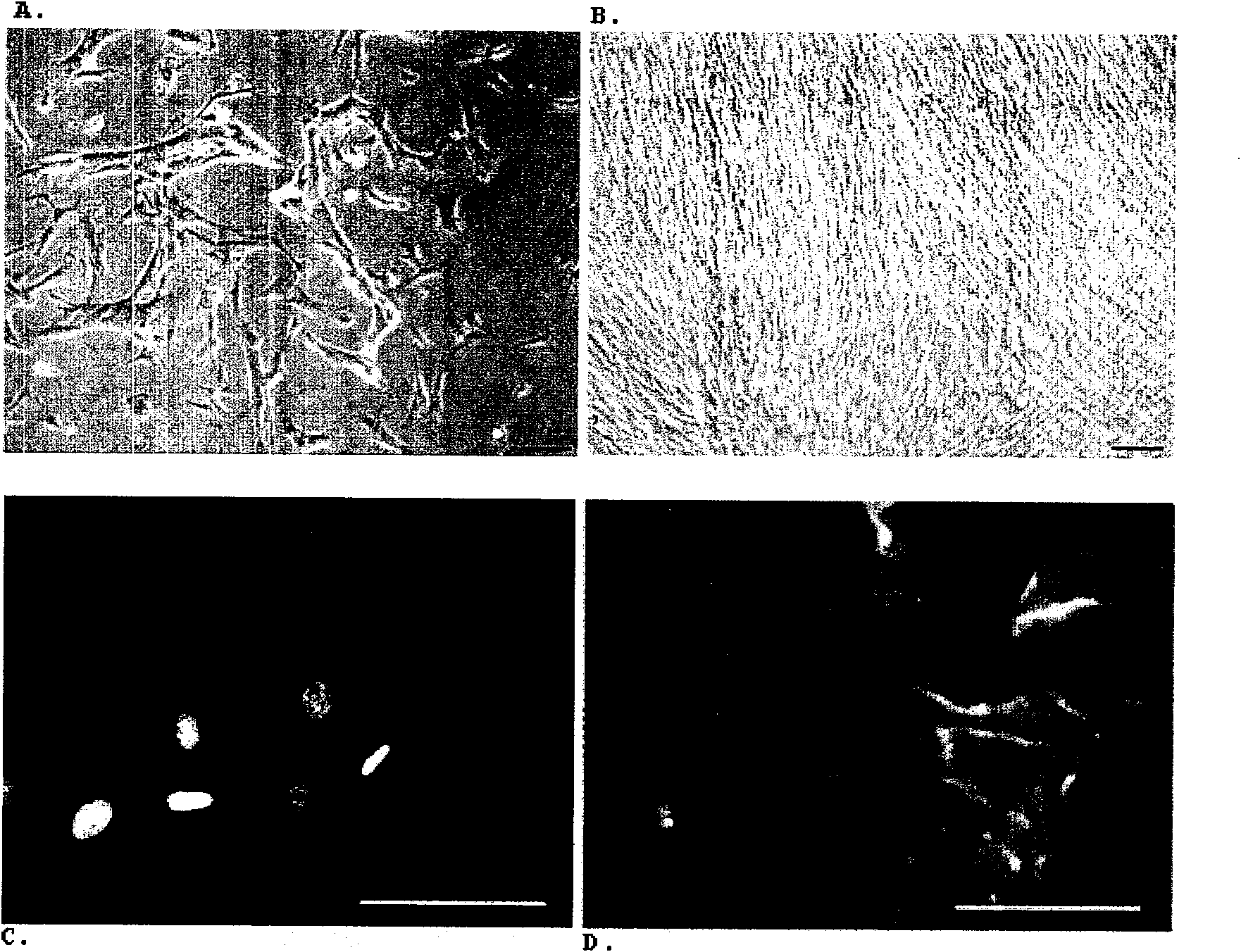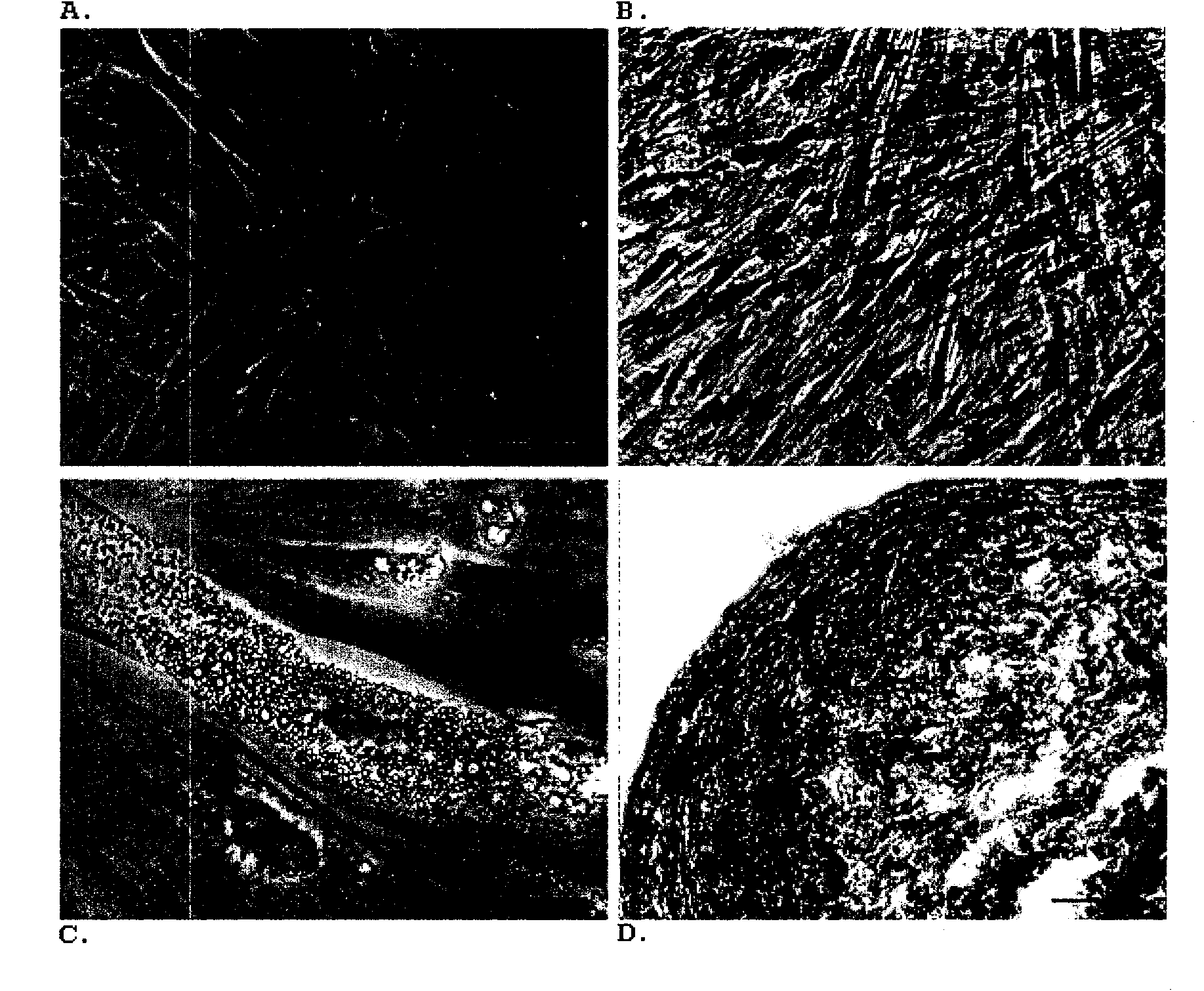Optimised and defined method for isolation and preservation of precursor cells from human umbilical cord
一种分离细胞、人脐带的技术,应用在细胞解离方法、生物化学设备和方法、胚胎细胞等方向,达到效力可靠的效果
- Summary
- Abstract
- Description
- Claims
- Application Information
AI Technical Summary
Problems solved by technology
Method used
Image
Examples
Embodiment 1
[0122] Example 1: Optimizing the type and amount of mechanical operation and strip size
[0123] Optimized for type of mechanical manipulation and size of initial tissue fragments, maintaining tissue mass (g), bottom surface area of digestion flask (cm 2 ), digestion volume (ml), and total bottle volume (ml) at a constant ratio of about 1:2:2:37, considering that a 1 cm human umbilical cord strip weighs about 1 g. After removal of the amnion, several types of cord segments were tested: low (5 cm segments); medium (2.5 cm segments); high (0.3 cm segments); and minced tissue. All segmentation was performed with the aid of a scalpel and the samples were treated with essentially the same conditions. It was concluded that the best yield in terms of total cells / cord mass / time at the end of P0 was obtained when 2.5 cm strips were used. Table 1 summarizes the quantitative results obtained.
[0124] Table 1: Segmentation Optimization: Cell Yield
[0125] Low (5cm)
[...
Embodiment 2
[0127] Example 2: Advantages of blood clots in umbilical cord vessels (1 vein and 2 arteries) change
[0128] Lysis of red blood cells is known to be toxic, reducing cell viability in vitro. Therefore, cell yields were compared when digestions were performed with and without blood clots. For the latter experiment, blood clots were removed with the aid of a scalpel. It was concluded that blood clots had a negative effect on yield in terms of total cells / cord mass / time at the end of P0. Table 2 summarizes the quantitative results obtained.
[0129] Table 2: Blood clot: Effect on cell yield
[0130] Have
[0131] Note: +++ = excellent, ++ = very good, + = good, - = fair, -- = poor, 0 = unsuccessful
Embodiment 3
[0132] Example 3: Properties of enzymes in digestive solutions, enzyme action alone or in combination, and Optimization of Enzyme Concentration
[0133] In order to maximize the yield in terms of the number of cells isolated from the initial tissue with the desired characteristics, two initial approaches were taken with respect to enzymatic digestion: in the presence of culture medium, without digestion, and thus in the absence of enzymes, the cells adhered directly to the culture flask, And the tissue was dissociated with a single enzyme: 0.075% (w / v) collagenase II or 2.0% (w / v) pronase.
[0134] Since collagenase II alone was the most effective method, this enzyme was combined with other enzymes, especially with 0.125% (w / v) trypsin (with or without 0.260 mM EDTA), with only 0.5% (w / v) hyaluronidase in combination, and in combination with a combination of 0.5% (w / v) hyaluronidase and 2.0% (w / v) pronase.
[0135] For this test, an optimized strip size of 2.5 cm was used...
PUM
 Login to View More
Login to View More Abstract
Description
Claims
Application Information
 Login to View More
Login to View More - R&D
- Intellectual Property
- Life Sciences
- Materials
- Tech Scout
- Unparalleled Data Quality
- Higher Quality Content
- 60% Fewer Hallucinations
Browse by: Latest US Patents, China's latest patents, Technical Efficacy Thesaurus, Application Domain, Technology Topic, Popular Technical Reports.
© 2025 PatSnap. All rights reserved.Legal|Privacy policy|Modern Slavery Act Transparency Statement|Sitemap|About US| Contact US: help@patsnap.com



